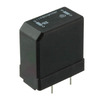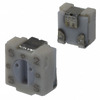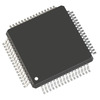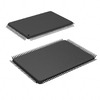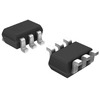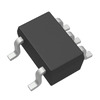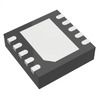Understanding PT2399 Chips With its Echo Effects and its Delays
The PT2399 is a popular chip used for creating sound effects like echo and delay in audio devices such as guitar pedals, home stereos, and karaoke systems. This article will explain how the PT2399 works, go over its different parts, and compare it to other similar chips. We’ll also look at how well it handles sound quality, how to fix common issues, and how to adjust its reverb settings. Lastly, we’ll compare it with the M65831 chip and answer some common questions about what the PT2399 can do and where it fits into the world of audio technology.Catalog

Overview of the PT2399
The PT2399 is an advanced chip used for creating echo and delay effects. It uses CMOS technology to convert analog audio signals into digital bits, stores them in its 44Kbit internal memory for processing, and then converts them back to analog using a digital-to-analog converter (DAC) and a low-pass filter. It's widely used in home stereos, TVs, and karaoke systems. The chip includes a built-in amplifier for boosting signals, a voltage-controlled oscillator (VCO) for managing frequencies and delay times, and integrated converters for easy signal processing. Its internal memory allows real-time changes to delay times, which is useful in live audio setups for echo and reverb effects.
Common Substitutes:
• ASB1020
• BU9253
• CD4046
• MN3005
• MN3101
• XR2206
How the PT2399 Works?
The PT2399 is a chip that plays a big role in processing audio signals. It’s commonly used in devices like guitar pedals, karaoke systems, and other digital audio tools. It contains several key parts, such as a power regulator, clock oscillator, microphone processing unit, reference voltage generator, signal processor, reverb preamplifier, and delay circuits. These parts work together to enhance audio effects.
The chip’s main job is to convert analog audio signals (like those from a microphone or guitar) into digital data. This data is stored briefly, allowing effects like reverb and echo to be added. After processing, the signals are converted back to analog and pass through a filter to ensure the sound remains clear and natural. The PT2399 is known for being simple, affordable, and high-performing, making it a popular choice for both hobbyists and professional audio engineers.
The PT2399 Total Harmonic Distortion and Noise
The datasheet shows that the PT2399's Total Harmonic Distortion (THD) is usually less than 0.5% for a 0.5Vrms input. Here are some measurements to explain this:

At the shortest delay of 30ms, the THD is measured at 0.28%, and the noise level is around -90dBF, which matches the datasheet. As the delay gets longer, the THD increases, going over 3% at extended delay times. However, when the delay time is kept below 350ms (using a 25K resistor), the THD stays at a reasonable level of around 0.5%.
Comparing PT2399 and M65831
Both the PT2399 and M65831 chips offer features for managing delay in audio processing, but they differ in design and use. The PT2399 allows fine control of delay time by adjusting an external resistor, making it great for live audio setups and custom audio projects. On the other hand, the M65831 offers simpler control with delay adjustments through DC level changes at the delay pin and serial control for easier integration with CPUs. This makes it better for devices where stability and ease of integration are more important. The choice between the two depends on whether flexibility or ease of setup is the main priority.
Manufacturer of PT2399
Princeton Technology Corp. (PTC) developed the PT2399. Since 1985, PTC has been a leader in technology innovation. In 1986, PTC introduced 3D modeling techniques, which improved computer-aided design (CAD). In 1998, they launched software to manage product development, making it easier to bring products from design to manufacturing. PTC's expertise covers areas like CAD, computer-aided engineering (CAE), and product data management (PDM). Their tools, including Creo for 3D design, Windchill for product management, ThingWorx for IoT, and Vuforia for augmented reality, help combine physical products with digital data, improving product quality, speeding up time-to-market, and optimizing business operations. PTC focuses on continuous innovation, helping companies stay competitive.
Adjusting PT2399 Reverb and Fixing Issues
The diagram below shows the PT2399 reverb circuit. If the microphone signal is too weak, an amplification stage can be added before it enters the PT2399. To stop whistling, a 103 capacitor should be placed in parallel with the feedback resistor, R40.
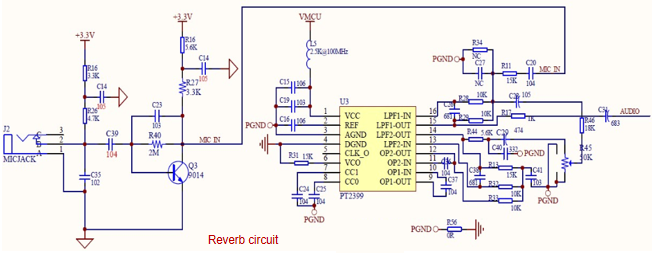
The diagram shows the reverb section. To avoid interference with other circuits, a single-point grounding method is used. Resistor R31, connected to pin 6, controls the reverb time. Increasing R31’s resistance lengthens the reverb time, while lowering it shortens it. Capacitors C37 and C36 fine-tune the reverb effect, and typically, capacitors between 683 and 104 are used. These capacitors should be kept consistent.
Capacitors C38 and C26 also adjust the reverb, generally using capacitors between 681 and 102. If their values are changed, they should remain in sync with each other. The RC circuit formed by R44 and C40, connected to pin 14, helps manage and reduce whistling. Adjusting R44 and C40 correctly can cut down on whistling effectively.
Capacitors C29 and C28 affect the clarity and fullness of the reverb. Lowering their values reduces low-frequency reverb, making the sound clearer. But if the values are lowered too much, the reverb may sound weak. If the sound is too soft, reducing the input capacitor C20 and output capacitor C31 can help.

Troubleshooting the PT2399
Checking the MIC Circuit Power Supply
Begin by thoroughly checking the microphone circuit’s power supply. Ensure that both the power for the RSM2399 and the IC1 dual-amplifier are working. Insert the microphone and use an oscilloscope to test the signal at C15. If no signal is found at C15, the problem may be with the IC1 amplifier. In this case, check the power supply, inspect the capacitors, verify the soldering of the potentiometer, and look for any short circuits. Even a small problem can affect the whole circuit.
Tracing the Signal Path from 2C11
If there is a signal at C15 but it disappears before reaching the RSM2399, check the signal path starting from 2C11. Go through each component along this path carefully, as any disruption can lead to signal loss. A careful check of each part is key to fixing the problem.
Testing Peripheral Circuits
Besides checking the signal path, it’s important to inspect the surrounding circuits related to the RSM2399. These parts play a big role in the system’s overall performance and stability. Check capacitors for failure, resistors for wear, and other components to make sure they are in good condition. Keeping these parts in good shape helps maintain stable audio processing, similar to how a well-tuned orchestra works together.
Frequently Asked Questions [FAQ]
1. What is PT2399?
The PT2399 is a chip developed by Princeton Technology Corp. It uses both analog-to-digital conversion (ADC), a 44Kb memory, and digital-to-analog conversion (DAC) to process audio signals. It is widely used for creating audio effects, such as delay and echo, in devices like guitar pedals and high-quality audio systems. Its reliable performance and ease of use make it popular with audio engineers.
2. What is the Frequency Response of PT2399?
The PT2399 can handle input frequencies up to 2 kHz, with the response gradually decreasing by 12 dB per octave. This frequency limit is designed to focus on audio effects, keeping the signal clear and free of high-frequency noise. This makes it ideal for creating delays and echoes, which is why it’s popular in audio processing.
3. What is the Delay Range of PT2399?
The PT2399 has a delay range of 30 milliseconds to 340 milliseconds, which can be adjusted using an external resistor. This gives users flexibility to fine-tune the delay effect for different applications. Whether you're aiming for subtle echoes or more noticeable delays, this feature makes the PT2399 a good choice for a wide range of audio projects.
4. Is PT2399 Being Discontinued?
Yes, the complete pedal version of the PT2399 has been discontinued, likely due to market changes. However, the PCB/kit version is still available for custom builds. Additionally, the Cosmic ECHO is a good alternative, especially for use with guitars and synthesizers, showing continued innovation in the audio processing world.
About us
ALLELCO LIMITED
Read more
Quick inquiry
Please send an inquiry, we will respond immediately.

STM32F030F4P6 Microcontroller: Features, Benefits, and Applications
on September 25th
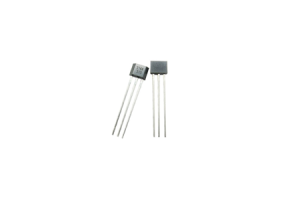
A Guide to the A3144 Magnetic Hall Effect Sensor
on September 25th
Popular Posts
-

What is GND in the circuit?
on January 1th 3259
-

RJ-45 Connector Guide: RJ-45 Connector Color Codes, Wiring Schemes, R-J45 Applications, RJ-45 Datasheets
on January 1th 2810
-

Understanding Power Supply Voltages in Electronics VCC, VDD, VEE, VSS, and GND
on November 20th 2625
-

Fiber Connector Types: SC Vs LC And LC Vs MTP
on January 1th 2253
-

Comparison Between DB9 and RS232
on January 1th 1869
-

What Is An LR44 Battery?
Electricity, that ubiquitous force, quietly permeates every aspect of our daily lives, from trivial gadgets to life-threatening medical equipment, it plays a silent role. However, truly grasping this energy, especially how to store and efficiently output it, is no easy task. It is against this background that this article will focus on a type of coin cell battery that may seem insignificant on the...on January 1th 1838
-

Understanding the Fundamentals:Inductance Resistance, andCapacitance
In the intricate dance of electrical engineering, a trio of fundamental elements takes center stage: inductance, resistance, and capacitance. Each bears unique traits that dictate the dynamic rhythms of electronic circuits. Here, we embark on a journey to decipher the complexities of these components, to uncover their distinct roles and practical uses within the vast electrical orchestra. Inductan...on January 1th 1791
-

What Is RF and Why Do We Use It?
Radio Frequency (RF) technology is a key part of modern wireless communication, enabling data transmission over long distances without physical connections. This article delves into the basics of RF, explaining how electromagnetic radiation (EMR) makes RF communication possible. We will explore the principles of EMR, the creation and control of RF signals, and their wide-ranging uses. The article ...on January 1th 1785
-

CR2430 Battery Comprehensive Guide: Specifications, Applications and Comparison to CR2032 Batteries
What is CR2430 battery ?Benefits of CR2430 BatteriesNormCR2430 Battery ApplicationsCR2430 EquivalentCR2430 VS CR2032Battery CR2430 SizeWhat to look for when buying the CR2430 and equivalentsData Sheet PDFFrequently Asked Questions Batteries are the heart of small electronic devices. Among the many types available, coin cells play a crucial role, commonly found in calculators, remote controls, and ...on January 1th 1781
-

Comprehensive guide to hFE in transistors
Transistors are crucial components in modern electronic devices, enabling signal amplification and control. This article delves into the knowledge surrounding hFE, including how to select a transistor's hFE value, how to find hFE, and the gain of different types of transistors. Through our exploration of hFE, we gain a deeper understanding of how transistors work and their role in electronic circu...on November 20th 1769





